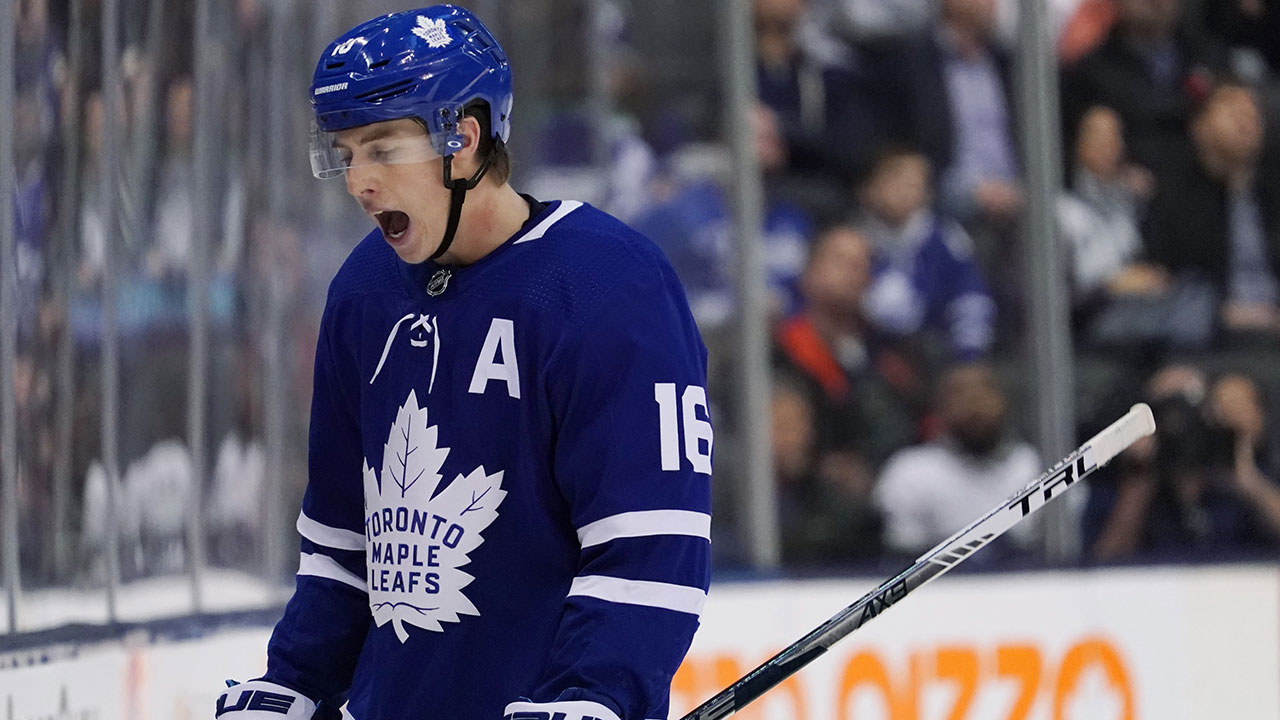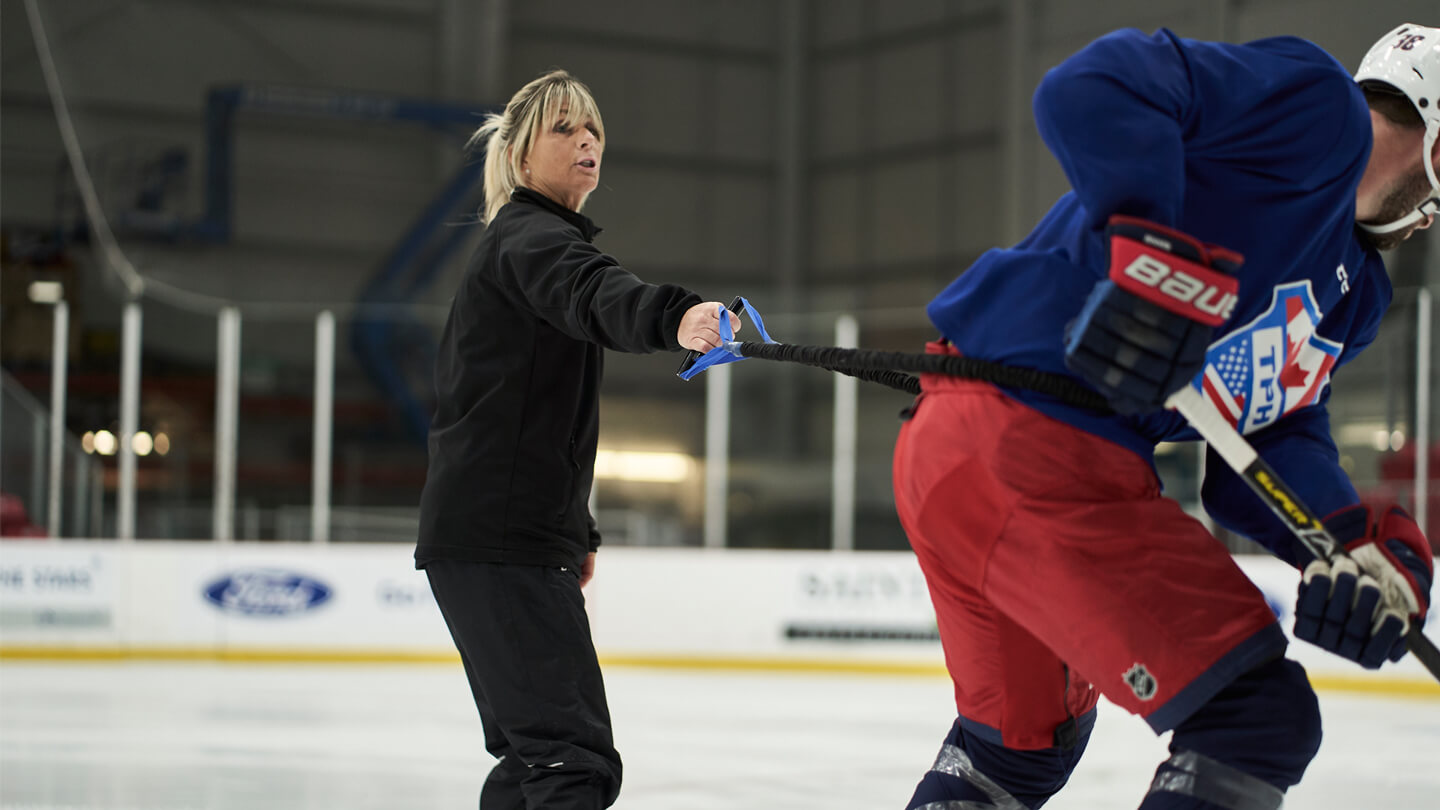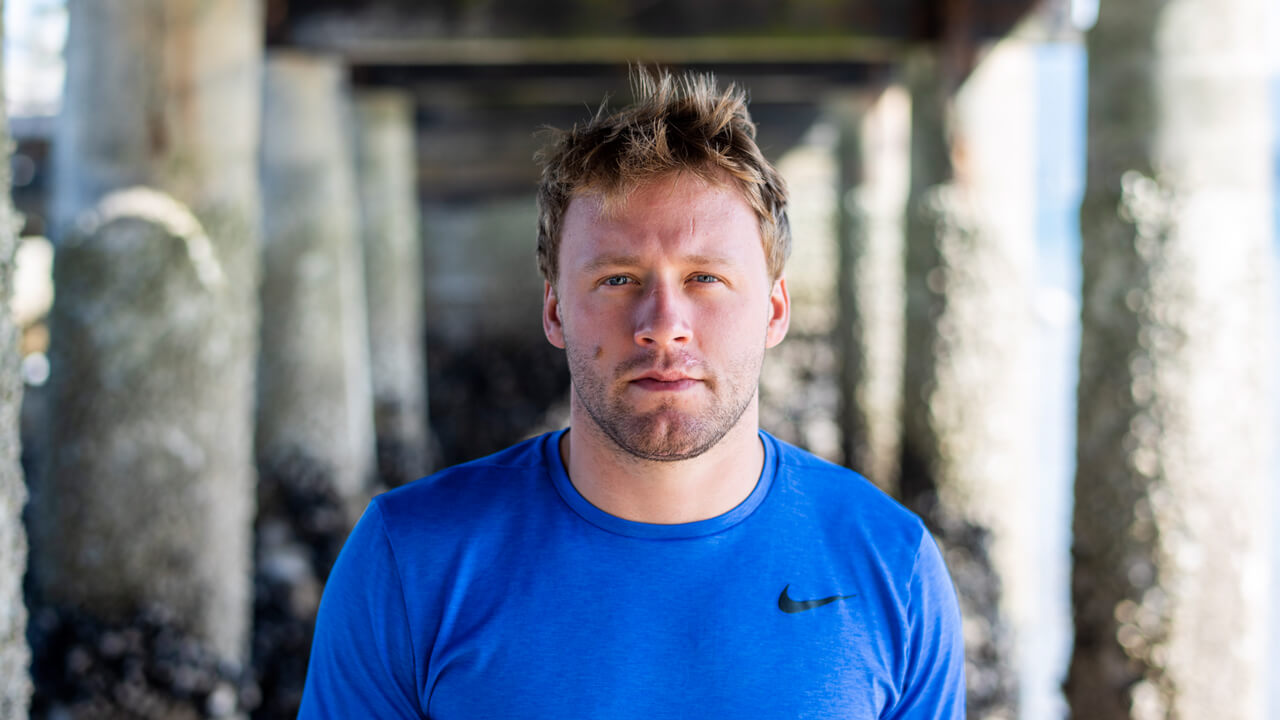Each sport has its own brand of hyperbole, and in hockey the most used, overused, misused and thoroughly abused is a term associated with talented teenagers: “generational talents.” The foundation of this term isn’t altogether wrong-minded — some of the very elite kids possess talent that doesn’t come along every year. Just look back on a few NHL Entry Drafts and you’ll find years that don’t produce talent that shimmers so brightly (for example, Mario Lemieux was the best player born in 1965 and, arguably, Joe Nieuwendyk in ’66 and Brian Leetch in ’67 — the latter two being good players, even NHL trophy winners, but a big drop-off from Lemieux). The notion of “generation,” though, is seemingly tied to sport’s short attention span or, maybe more fairly, short career spans. Lemieux was deemed a generational talent, as was Wayne Gretzky, who was born four years before him. Sometimes the gaps are bigger — after Crosby, who was born in 1987, you might pass over many only excellent players (including Steven Stamkos, John Tavares et al.) before you’d land on Connor McDavid as a ’97. Sometimes the gaps are insignificant — Alexander Ovechkin being born less than two full years before Crosby.
Since Jack Hughes, like Crosby, showed up on the hockey industry’s radar at 16, he has been a name in the game; if he doesn’t enjoy the highest profile among the media and public, then he is certainly universally known in industry circles. And, yes, Hughes has been labelled, for better or worse, a generational talent.
In his underage year, Crosby burst onto the scene at the summer under-18s, effectively a preseason exhibition and a preliminary read of talent for the upcoming draft, but really not much more than that; by contrast, in his underage year, Hughes stepped up to much tougher company when he joined the US team at season’s end for the IIHF under-18s. The respective national federations were sending their best players, who were in much better form than they would have been in August and with much higher stakes on the line, namely their first shot at a real world championship and a last bid to impress NHL scouts before the entry draft that spring.
For scouts, Crosby had stood out on a below-average Canadian team, but Hughes effectively dominated play, leading the tournament in scoring and winning the MVP with a US team that came up a couple of goals short against Finland in the gold medal game. That Finnish team featured Jesperi Kotkaniemi, who would be selected No. 3 overall in the draft a few weeks later and, before year’s end, at age 18, establish himself as a top-six forward for the Montreal Canadiens.
Like every kid on the ice with his under-18 team, Jack Hughes has never known hockey without Sidney Crosby. They were lacing on skates for the first time when Sidney Crosby was in Rimouski. They were in junior kindergarten when he was in his rookie season in Pittsburgh, in Grade 3 when he hoisted the Stanley Cup for the first time. More than they can know, they’re playing a game that Sidney Crosby created or, at least, remade.
Of the game before Sidney Crosby, they may only recognize a few names or have seen a few highlights. They may have seen Bobby Orr scoring the overtime goal against St. Louis — sure, the one that’s in the commercials. But New Jersey’s neutral-zone trap, the hook-and-hold slog of the ’90s? That bears only a passing resemblance to the game they know. It might as well have been played on the sands in the Colosseum of ancient Rome for all they know. Jack Hughes and his teammates came into this world in 4 B.C. — that is, they were born four years before Sidney Crosby played his first NHL game. They and all generations to come are the game’s real millennials, players in the game’s second century.
Consider that the players that shared the ice with Hughes in the US National Team Development Program don’t know what it’s like to play with two-line offsides. They came of age in a game that permits the 120-foot stretch pass. If they’ve ever knocked a stick out of an opponent’s hands, it has resulted in a slashing penalty. Maybe the referees in youth hockey, or even up in high-tournament play, weren’t as strict on penalty calls for hooking and holding as the referees are in the NHL today, but still, they’ve only known a game with a very low tolerance for the obstruction that was once accepted and expected.
The “generation” that came immediately in the wake of Crosby’s arrival — Jonathan Toews, Steven Stamkos, John Tavares — were already players-in-progress in the early 2000s and as such entered the NHL in the early days of its transition period, as the league adapted to its new rules — they had their own hockey heroes. For instance, Stamkos, like Crosby, cited Steve Yzerman as his favourite player when he was a teenager. And when Toews, Stamkos and Tavares entered the NHL, they played with players who would be left behind by the game’s paradigm shift. Ten years into the Crosby era, though, the game had fairly well sorted itself out — teams had effectively phased out the enforcers whose lack of skills or speed couldn’t be hidden on the fourth line, or defencemen who just relied on their size and strength to clutch and grab their way around playing without the puck.
Connor McDavid and Jack Eichel, the first two selections of the 2015 entry draft, would have been in grade school when the impasse in collective bargaining led to the cancellation of the 2004–05 season — that is, there was no hockey to watch that year, even if they didn’t fully understand why. They entered the league in what you can regard as the later stages of its evolution — in McDavid’s case, he came into the league when it was faster than ever and he pushed the needle that much farther into the red. But for Jack Hughes and those who will come along down the line, all they will know is a game that puts a premium on speed and skill. Their hockey memories, ancient history, stretch back approximately to Crosby’s first Stanley Cup victory in 2009. Crosby did not just represent the state of the art in hockey when they were growing up; he represented both the way the game was to be played and the way to make yourself a player.
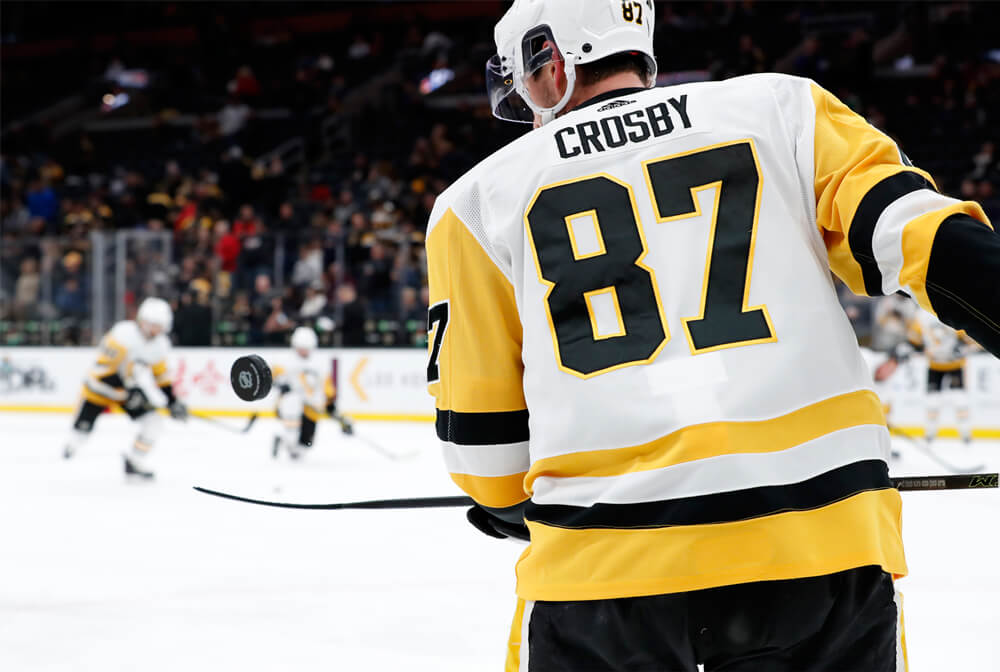
Dick Irvin, the coach of the Montreal Canadiens between 1940 and 1955, had a motto painted on the wall of the home team’s dressing room at the Forum in the early ’50s: “To you from failing hands we throw the torch, be yours to hold it high.” The line was pulled from the poem “In Flanders Fields,” written by Lieutenant-Colonel John McRae in World War I, and if it didn’t necessarily inspire some of the greatest teams in the history of the NHL, it was associated with them. What it certainly does, though, is neatly define what we expect from the outgoing and incoming stars during their briefly overlapping times. In the mind’s eye the imagery comes to life as a narrative: a soldier, mortally wounded, giving way to an anonymous serviceman — a young kid, freshly enlisted, who recognizes the valour and feels a sense of duty to see the job carried through to its righteous conclusion. Likewise, we expect stars in the game, down to their last breaths, to sustain the game, to make it ever prouder. They more than anyone know their game and know that overstaying carries with it the significant risk of tarnishing their legacies.
The relationship between Crosby and the McDavids and Hugheses whose stars are ascending is a sharp contrast to that in other eras. It’s no longer the way it was for the Canadiens when Irvin had that motto put on display at the Forum. In those days a young Jean Beliveau had tuned in Canadiens games on the radio, listening to the heroics of his future teammate Maurice “Rocket” Richard. He had known the legend of the Rocket, but not the man or his game at any intimate level. Likewise, for Bobby Orr, he would have seen grainy images of Beliveau or Bobby Hull on a black-and-white TV on a Saturday night in Parry Sound, Ont., but he couldn’t really go to school on them — video replay and slow motion were still in their infancy, so everything would have had to be gleaned from a first reading. And even into Wayne Gretzky’s teenage years up through to junior hockey, how much could he have seen of Orr, Hull et al., when their games were televised once or maybe twice a week until the playoffs rolled around, by which time he had his own busy schedule to keep?
In other realms, access is of a different sort. Think of art: the masterpieces hang in galleries where artists can study every brushstroke. Think of literature: writers can dive into the great books until they are memorized and their designs clear, enabling them to build on the works of those who went before. Think of science: researchers can search published papers on a given subject, giving them a running start on discoveries. Think of chess: aspiring players can study the documented games of past grandmasters and champions and recreate them. In each of these fields there is an accumulation, a direct and substantial building-on to what had gone before.
Now think of Sidney Crosby. While it’s true that, in the ’90s, there were dedicated sports television networks, and more NHL games were being broadcast than ever before. And games could be recorded and replayed on VHS tapes. Crosby had an access to the NHL game that Richard, Beliveau and those who came later in the modern era didn’t have. Still, Crosby couldn’t have had the understanding of the league and the game that Jack Hughes has.
It’s not just that today’s emerging stars are arriving in the NHL with a greater knowledge of those who went before them —they almost certainly know more about Crosby than Crosby did about the NHL circa 2005. I cite Jack Hughes here, mostly because he is an available and useful example, but you could substitute Connor McDavid or, a few years down the line, a phenom to be named later, some kid who is playing atom or peewee right now. And when I talk about knowledge, I’m referring not to the stats and the biographies, the stuff of history students, but rather the mechanics and very fundamentals of the game. At the risk of overstatement, Jack Hughes may actually know and understand more about Sidney Crosby’s game than Maurice Richard did about his own. It is, I suppose, the difference between those who play the game and those who make a study of it — these categories can be sorted out generationally.
This goes to the heart of the difference between, on the one hand, fandom and worship and, on the other, impact and influence —effectively, like the difference between a still picture and visualization.
As a grade schooler, Wayne Gretzky was famously photographed with Gordie Howe at a banquet in Brantford, Ont. The black-and-white photo has been trotted out repeatedly over time, and it offers context to a remarkable occurrence less than a decade later: two players, 32 years apart in age, playing in an NHL All-Star Game. But what influence did Howe really have on Gretzky beyond inspiration? How did No. 99 go to school on the Hall of Famer? It’s impossible to pick up any common threads running through their games. There’s not a bit of Howe’s menace in Gretzky’s game, nothing like Howe’s ability to flip from a right-handed shot to left-handed as the situation demanded. If Gretzky’s staking out the area behind the opponents’ net as his “office” was inspired by someone, it certainly wasn’t Howe.
Jack Hughes has a photo of Gordie Howe wrapping him in a headlock — evidently there wasn’t a hockey stick available or they would have replicated the photo with Gretzky. Hughes has no shortage of souvenirs; given that his father coached for the Boston, LA and Toronto organizations, including a long stint as the Maple Leafs’ player development director, Hughes had uncommon access to the NHL. But the photo with Howe is really just a treasured memento — where a hockey legend whose career began in the 1940s poses beside a kid who might be still be tearing it up in the 2040s.
Of far greater benefit to the development of Hughes’s talent was the time he spent, as a middle-schooler, on the ice with his father, Jim, and even with a couple of young pros who would land in the Maple Leafs lineup: Connor Brown, whose father, Dan, was coaching Hughes in minor hockey, and William Nylander, who at 19 billeted with the Hughes family when he first moved to Toronto. This is to say, Jack Hughes had a proximity to the NHL game that less than one percent — and maybe even less than one percent of one percent — of youngsters have.
The Hughes family also has online scrapbooks full of photos of Jack and his brothers wearing matching Penguins No. 87 sweaters. On its face, this was homage and hero worship. Effectively, it amounted to an announcement of the brand: Jack Hughes wanted to be a player in Crosby’s mould. He went to school on the Penguins captain. To an extent, that course of study continues to this day, even as Hughes breaks into the NHL and plays against Crosby.
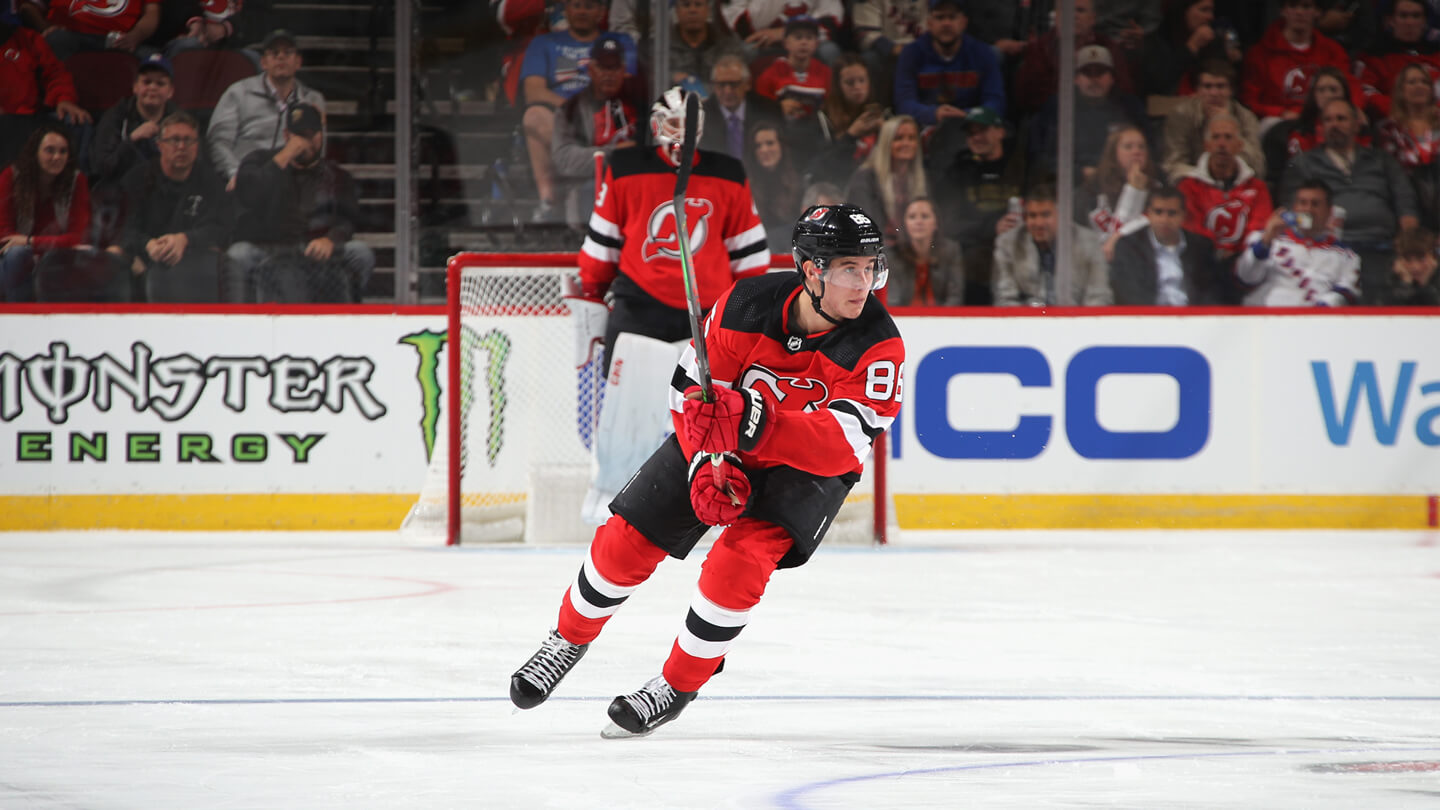
Consider Hughes’s routine with the US NTDP in Plymouth, Mich. There are the expected constants: high school during the morning and early afternoon; practice and gym work later on. But in the midst of that — certainly when he’s at the USA Hockey complex and very likely when he gets home, and perhaps even during spare minutes at school or in transit — Hughes will screen hockey video footage. It might be on a laptop or an iPad. It might be on a monitor in the coach’s office or even on his iPhone. And it won’t be a show of packaged news highlights. It will be either: sequences from NTDP games or sequences from NHL games, often but not always Sidney Crosby’s. He views them with eyes trained to pick out the details, as you’d expect from the son of a coach. Says Hughes, “I watch a lot of Patrick Kane because we’re physically pretty similar and have sort of the same skills, but I’ve picked up a lot from Crosby. The way that he uses his edges, his body position, the way he keeps his body between the checker and the puck, and the way he uses and finds his teammates … technically, it’s all that you want to do. I find things that I want to try [in the NHL video] and look for things that I can do better [with the NTDP video].”
Within a couple of hours after a game, a member of the NTDP staff will edit together videos for the players — general team footage, but also packages specific to individuals, readied for the coaches for review. The coaches will probably wait until the next day to screen it, but Hughes and a lot of his teammates won’t. As soon as that video is up for sharing and streaming, Hughes will be all over it. “Sometimes I call Jack in to the office to watch some video — whether it’s his game or NHL stuff — and other times he’ll ask if he can come in,” NTDP coach John Wroblewski says. “I do it with everybody, of course, but Jack is a sponge for coaching. He really wants it … anything where he can pick up an advantage. Every player who thinks there isn’t room for improvement is going to flatline … He’s a real student of the game. He watches video here and I know that when he gets home, he’s breaking it down even more.”
This routine — nay, ritual — does not stamp Jack Hughes as remarkable in his class, however remarkable his skills might be. In fact, this illustrates that even the very best player in his class is like so many other players who are emerging in the NHL’s second century — the average pro prospect is enriching himself with this sort of video tutorial. For Hughes, for any other elite player, for those who only aspire to be elite, a game is first played and then watched and rewatched. When Hughes walked into Wroblewski’s office, almost anything the coach screened was a second viewing for the teenager. The same applies for his teammates. Perhaps there are a few that remain incurious and casual about the game who excel, who reach the game at the highest level. No matter how committed they might be when the puck is dropped, their potential can’t be fully tapped until they’ve effectively exhausted all means of preparation.
Of course, it’s not just generational on the count of hockey. The fact is, the millennial — or, in the case of Hughes, the post-millennial — has a comfort level with technology, with video, with sports science, with analytics, that previous generations did not. They may not be any more worldly than teenagers of another time, but their knowledge and understanding of the game is certainly so. The viewing of a video doesn’t wait for the day after the game — in midgame during stoppages in play, coaches at the NTDP will often lean over a player’s shoulder and show him a play on an iPad and give him advice about a detail in his game.
All that Maurice Richard or Jean Beliveau would have seen would have been photos in a program or, at season’s end, some grainy black-and-white highlight films. When Roger Neilson began his long NHL coaching career in Toronto in the late ’70s, he was derided for using videotape as a tool for coaching NHLers, even though game film had been used in college and pro football for a generation. The conventional wisdom in the NHL was that systems were basic. Neilson was derisively nicknamed “Captain Video,” after a character from a TV sci-fi series in the ’50s. At best, Neilson was considered an eccentric, at worst a quack, and that speaks to the prevailing mindset in pro hockey.
The league in those days observed something more than an orthodoxy. The game was a hidebound realm straining under a tyranny of traditions. Coaches operated on conventional wisdom and intuition. It’s fair to say that coaching and teaching in the 1970s and ’80s had more in common with the game as it was played four decades before than today.
Team-generated video available to Crosby and his teammates in Dartmouth, Shattuck or Rimouski would have been limited at best. Streaming of NHL games was a few years away. If the young Crosby were transported ahead in time a decade or so, and was entering an NHL dressing room as an 18-year-old rookie in 2019, his older teammates would not regard him as a hockey nerd — he would not be an outlier. In fact, he would lag behind them, at least as far as video goes. Likewise, if Jack Hughes or any of his teammates had walked beside Crosby into the Penguins’ room after the cancelled season, the general reaction would have been “What’s with them?”
In hockey’s first century the NHL provided jobs to hundreds of players who would have told you that hockey was a game; for the most deeply invested, a passion. Now, however, for those who are even reasonably aspiring to the NHL, hockey must be pursued with a professional rigour. The money is so great and chased by so many, that all must look for every small advantage. For generations, the sole concern was getting outworked on the ice, but that now is only the end point. If you are outworked off the ice, you may never get a chance to be outworked on it. And Sidney Crosby raised the modern standard for work to be put in — even lacking easy access to practice ice and other support when he was growing up in Halifax, he doubtlessly put in more hours of work — on skills, on conditioning — than any other player on the list of the NHL’s 10 greatest of all time. No one looked for approaches away from the arena — diet, lifestyle choices — and no one looked for advantages like Crosby. He set standards not only put into place by teams, but also those set by the players themselves. Those who were early adopters flourished. Those who never came around fell by the wayside.
Moreover, Jack Hughes, born May 14, 2001, has only read about 20th-century hockey, only watched low-def video, only walked around the Hockey Hall of Fame and read the plaques. Jim Hughes told Jack and his brothers stories about his days playing college hockey back in the ’80s, but it was nothing like the game circa 2019. They grew up in the game that Sidney Crosby not only starred in, but in fact shaped — the game that has de-emphasized the dump-and-chase, that has emphasized puck possession, that rewards elite speed and skill more than simple brute strength.
“It’s a far better game now, one that’s getting faster every season,” Nick Lidstrom told me. “The change in the rules [in 2005] didn’t make the game faster, though. The rules gave the players a chance to make the game faster. And once somebody is going faster, everybody has to catch up.”
As Lidstrom lays it out, cause and effect might be tough to sort out here — did Crosby make the game faster, or did the evolving game compel him to find more speed? Regardless, he became the vanguard of the new NHL.
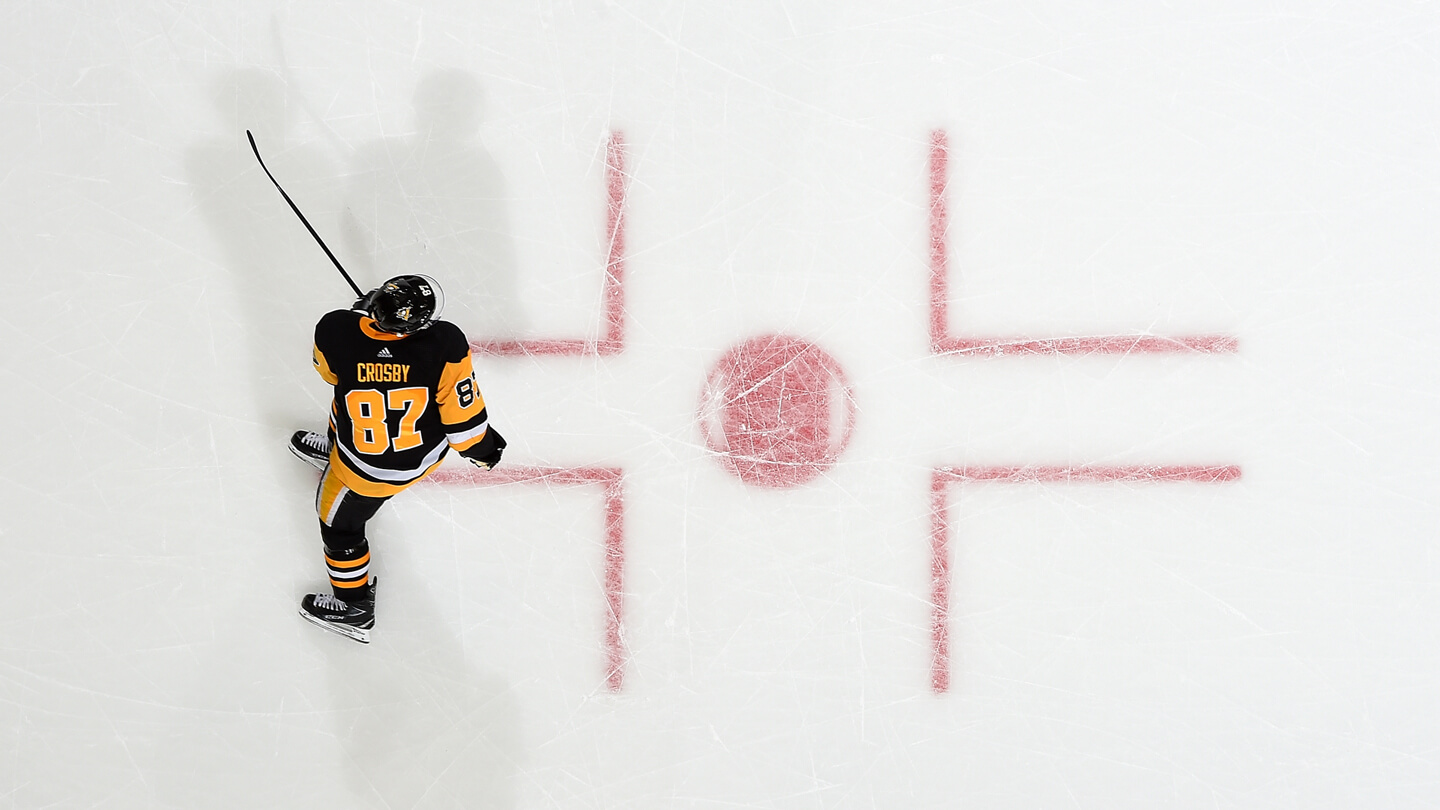
Though he looks first to Kane, Jack Hughes stands to benefit more directly from the trail Crosby has blazed. Jim Hughes works as a player development consultant for CAA, the agency that represents both his son and Crosby, and Jack joined Crosby, Nathan MacKinnon and other CAA clients at Andy O’Brien’s intensive workouts in Vail. It’s not really like Wayne Gretzky borrowing skates to get on the ice with Crosby in Los Angeles all those years ago, and it would be way out of Crosby’s character to hype Hughes and predict that he’d break NHL records. There will be no similar anointment.
Still, there are through lines, albeit ones that capture a point in time. Crosby at 14 probably would have had a lot in common with Gretzky at the same age — Halifax and Brantford might not have been different on a lot of counts. By contrast, Jack Hughes at 18 probably would have a lot in common with Crosby after he celebrates his 32nd birthday. Not that Hughes would think of himself as a peer — there’d still be a pecking order — but the degrees of sophistication are not as great as the difference in age, not in today’s game at the elite level. It’s just a matter of professionalism — Hughes grew up around the professional game, developed his game with a professional level of support. Whereas Crosby, unique among today’s players, was self-made.
Look at Crosby’s contemporary rival. Ovechkin had the support of Moscow Dynamo and a state-sponsored system in the Russian capital; he skated with pros from the age of 14. Look at those who have come along in the past decade: McDavid spun out of the Greater Toronto Hockey League, the largest minor hockey organization in the world; Rasmus Dahlin’s father is a player development consultant with the Swedish hockey federation; and, as noted, Jack Hughes had experience not just in the GTHL and USNTDP, but direct access to the NHL. These players had material support and surrounding talent that wasn’t there for a kid in Halifax in the ’90s. What sets Crosby apart is that his career, his creation, was very much his independent project. He very much did this on his own. It goes back to what Pat Brisson described as “vision” and what some new-age coaches in hockey and other sports might call “visualization.” He at once saw what he might become and also how the game itself was evolving.
The lore about Gretzky as a child is well known: how he would sit in front of the television in his family’s living room and trace the path of the puck across the screen with his finger, as if to find patterns within the game. The scene one imagines of young genius in action evokes A Beautiful Mind and anticipates Hughes’s and other millennial players’ use of their iPads. Whatever subtleties and intricacies Gretzky found are probably beyond the ken of an average fan, and perhaps even that of an average NHL player; in fact, they might only be so much data that bypasses Gretzky’s conscious mind and sustains intuition. That is, if Gretzky knew better than anyone else where the puck was most likely to go in any given situation, if he knew better where his teammates and opponents were likely to be on the ice at any given moment, he might not be able to explain exactly how it was he came to know this. At a micro level, Gretzky saw things differently — if it could be explained, then it probably could be taught and everyone would have the knowledge.
In terms of hockey sense, Gretzky’s IQ would be the highest ever recorded, to be sure. Crosby’s genius is of another sort entirely, and it has played out at a macro level. That’s not to give short shrift to his own vision and ability to process the play on the ice — it’s second to nobody’s in the NHL circa 2019. If he has been caught or passed by Connor McDavid or Nathan MacKinnon or anyone else, it’s a tribute to their physical skills, not their vision or hockey sense. What he did that they haven’t is to reimagine the game of hockey and what could contribute to excellence and success. It would have been challenging even with others helping out, but even more so with institutional resistance — from the officials in Cole Harbour who fought him in court to prevent him from playing midget hockey, to the Quebec league blocking his way to playing at 15, and even to the veterans on the Penguins who derided him as a hockey nerd. He was a kid who didn’t know his place — at least that’s what the adults in the room would have said, and sometimes loud enough to be heard. And some of them used their clout to block him along the way. For all the joy the game gave him, some of it couldn’t have been fun for a kid or even a young man.

Watching Jack Hughes with the NTDP at the USA Hockey Arena, I found myself shaking my head and asking myself, How did he do that?
This was the question I’ve contemplated about Crosby across the arc of his entire career. Young players like Hughes might be fairly familiar with Crosby’s games in Stanley Cup runs in 2016 and ’17 that they’ve screened on iPads. They might have even read a bit of the backstory. Still, they can’t possibly know the extent of the challenges that Crosby faced and overcame. Really, no teenager could possibly get it. No teenager has a world view expansive enough to appreciate the obstacles Crosby faced as a kid in Halifax. And even for Hughes and his teammates, they can’t fully appreciate the advantages they enjoyed in the USA Hockey program in Plymouth compared to Crosby at the same age.
It’s tempting to presume that there was a levelling of the playing field when Crosby made it to the Quebec league, that the final stage of his development was going to be like that of others. Yet even in Rimouski, he was still playing catch-up. His peers were still in a position of advantage. The Q was in a very soft period, if not at an all-time low, definitely the third-best of the three Canadian major junior leagues. In the two seasons prior to his arrival, the Quebec league had turned out a paucity of NHL first-round draft picks: two skaters in the first round in 2003 (Steve Bernier, who’d go on to an NHL journeyman’s career, and Crosby’s Rimouski teammate Marc-Antoine Pouliot, who played less than 200 NHL games) and just one in 2004 (Alexandre Picard, a forward who didn’t score a goal and recorded only two assists in 67 career games). Looking down the lists, occasionally a name pops up (Patrice Bergeron as a second-rounder in 2004, for instance). So, on its face, it looks like Crosby faced soft competition, and only a few of his teammates in Rimouski played any pro hockey, and at a lower level, after graduating from the Quebec league.
In Alexander Ovechkin’s first season in Washington he was probably taking a step back from his Dynamo team in Moscow during the lockout season — in the KHL in 2004–05, he played with a dozen NHLers, including future Hall of Famer Pavel Datsyuk. In Connor McDavid’s last season in junior, the OHL featured 24 NHL first-round picks from the 2013 to 2015 drafts. As a 16- and 17-year-old, Hughes was on the ice every day, practising and playing with seven other projected first-round draft picks.
When Crosby jumped from the Quebec league to the NHL, the bar was raised far more dramatically than for the aforementioned. How did he do that? is a question you can ask of any player who reaches the NHL and achieves stardom, but perhaps more than anyone on the list of the greatest players of all time, Crosby made his way from farther off the grid. If you pushed for a one-word answer, try alone.
 Excerpted from Most Valuable by Gare Joyce. Copyright © 2019 Gare Joyce. Published by Viking Canada, a division of Penguin Random House Canada Limited. Reproduced by arrangement with the Publisher. All rights reserved.
Excerpted from Most Valuable by Gare Joyce. Copyright © 2019 Gare Joyce. Published by Viking Canada, a division of Penguin Random House Canada Limited. Reproduced by arrangement with the Publisher. All rights reserved.


